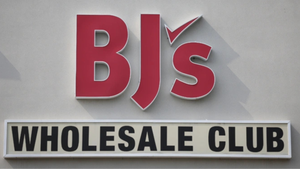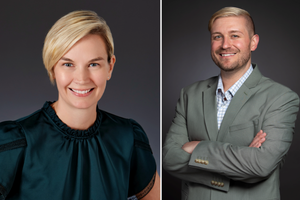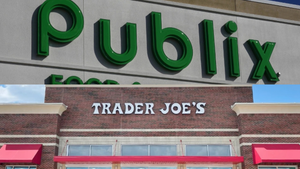PHARMACISTS TOLD INNOVATION IS KEY TO SUCCESSPHARMACISTS TOLD INNOVATION IS KEY TO SUCCESS
SAN DIEGO -- Pharmacies that are innovative and invest in technology will survive and prosper, said Gerald Heller, chairman of the Alexandria, Va.-based National Association of Chain Drug Stores. He was speaking at the annual NACDS conference held here last month, which was attended by more than 1,600 pharmacy suppliers and retailers.Customer satisfaction must continue to be the pharmacist's highest
September 16, 1996
PETER MALBIN
SAN DIEGO -- Pharmacies that are innovative and invest in technology will survive and prosper, said Gerald Heller, chairman of the Alexandria, Va.-based National Association of Chain Drug Stores. He was speaking at the annual NACDS conference held here last month, which was attended by more than 1,600 pharmacy suppliers and retailers.
Customer satisfaction must continue to be the pharmacist's highest priority, said Heller, who is president and chief executive officer of May's Drug Stores, Tulsa, Okla. "We cannot expect our customers to wait 20 to 30 minutes or longer to get a prescription filled and explain this dilemma as, 'Well, it takes time to fill a prescription.' "
Pharmacists who find a way to eliminate or decrease waiting time will reap benefits, Heller said. "Technology and automation are the answer. We must work to find and put in place the technology to handle every other prescription task except the final patient interface, if we want to succeed in this business into the future."
At the NACDS trade show, there was ample evidence of the stunning new pharmacy technology that may be pharmacy's salvation. On display at many of the 200 booths were new phone systems, electronic prescription transfer systems, automatic refill reminders, automatic filling systems and new label systems.
While extolling the virtues of technology, Heller said pharmacists are still the "human link" in an increasingly depersonalized health care system. "I'm not talking about replacing pharmacists, but using them more in line with their current education and training. The pharmacist must be freed from his mundane tasks in order to interface with the customer and maintain that 'human link,' " he said.
Although the pharmacist's role is in transition, Heller said the strong community pharmacy infrastructure will continue to be the dominant method of distributing pharmaceuticals to patients.
"People want to talk [to] and be serviced by people."
The pharmacist is the most accessible of any health care professional, and in some small towns and rural areas, may be the only health care professional around, Heller said.
There are more than 120,000 pharmacists in over 53,000 community drug stores in America, Heller said. "Pharmacists have a strong foundation -- public respect. Gallup polls continue to show that pharmacists are the most trusted of professionals. However, we cannot take that or our pharmacies for granted in the face of the current marketplace environment."
That environment has placed additional burdens on pharmacy, he noted. Many pharmacists are trying to cope with the stresses of narrowing margins and an increasing workload that is "unrealistic." Among the many duties pharmacists now have to assume are counseling, disease management, therapeutic interchange and generic substitution. In addition, pharmacists have the administrative burden of complying with managed care insurance requirements. Heller urged pharmacies to form alliances with suppliers that provide a win-win situation.
"Wholesalers are offering consignment arrangements for distribution of pharmaceutical products, the economics of which need to be evaluated by each individual company," he said.
This is a new trend that could have an interesting impact on the dynamics of the prescription market, particularly if pharmaceutical suppliers adopt the same policy, Heller pointed out.
"It seems the marketplace is a little bit out of whack," he added. "I never dreamed when I graduated from pharmacy school 37 years ago that a basketball player today could earn $15 [million] to $25 million a year to put a basketball through a hoop, while a pharmacist with five to six years of education could be paid less than $3 to fill a prescription and counsel a patient," he said.
About the Author
You May Also Like




